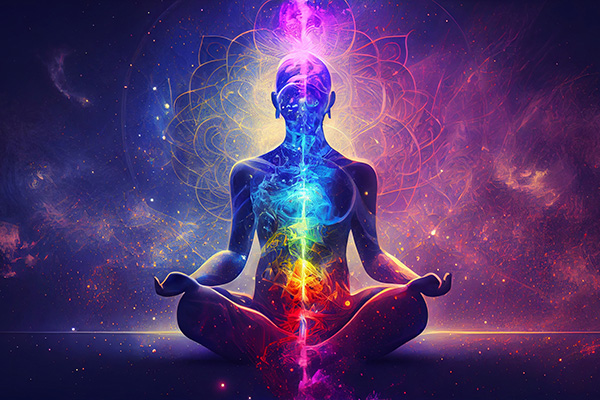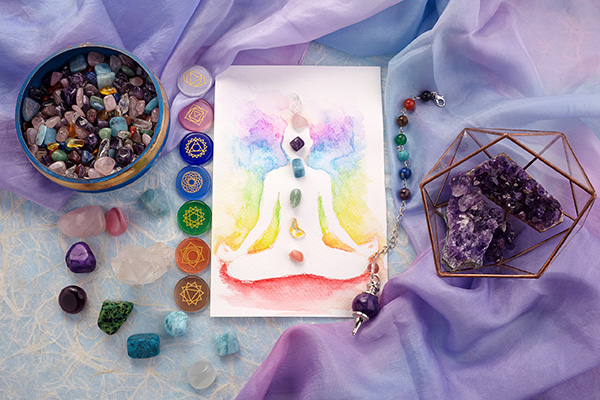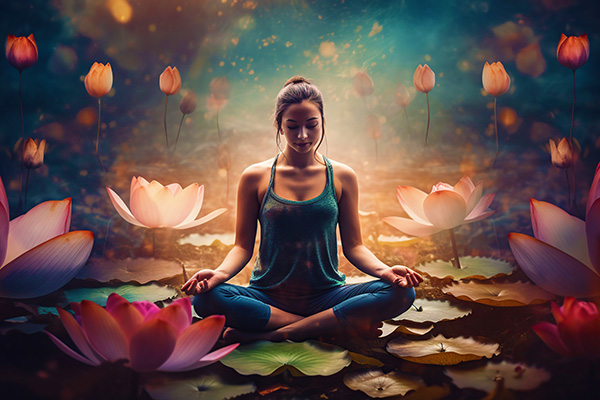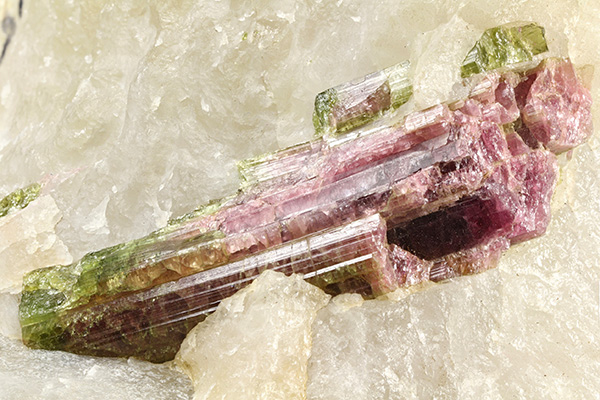chakra balancing
A Beginner’s Guide To Holistic Healing
 True healing is about more than just easing lower back pain or calming anxious thoughts. It’s about supporting the “whole you” so you can live in greater balance, joy and peace.
True healing is about more than just easing lower back pain or calming anxious thoughts. It’s about supporting the “whole you” so you can live in greater balance, joy and peace.
It means caring for the body, the heart, the mind, and the soul. While each of these areas can be worked on separately, the deepest transformation happens when they’re all supported together. That’s the essence of holistic healing.
For many people who are new to holistic healing, it can seem complex, mysterious, or even intimidating. Often, there’s curiosity, but also uncertainty about where to begin, especially if they’ve never tried it before.
Some worry they’re not knowledgeable enough, or believe it’s something only meant for people with special spiritual insight or advanced esoteric understanding. Others may wonder if they’ll “do something wrong” or fear they won’t understand what’s happening during a session.
These feelings are completely normal, but they can hold you back from exploring something that could be deeply supportive and life-changing.
The truth is, holistic healing doesn’t have to be complicated or overwhelming. You don’t need to know every technique or understand all the details to benefit from it. An experienced healer will help you find the best route, even if you’ve never walked the path before.
If you’ve never had a holistic healing session, here’s what often happens: You might arrive thinking you need one specific kind of support, but a skilled healer will take time to tune in and see what you truly need most. Sometimes they’ll use the method you requested, and other times they may suggest a different approach, or even combine several techniques, to support you in the best possible way. The aim isn’t just temporary relief; it’s to start you on a healing journey you can continue long after the session ends.
Transform Your Energy With Color Meditation
 Did you know that color therapy can balance and enhance your life emotionally, physically, and spiritually? It’s true! Colors are not just visual experiences. They are frequencies of light that interact with our own energy field, impacting how we feel, think, and behave.
Did you know that color therapy can balance and enhance your life emotionally, physically, and spiritually? It’s true! Colors are not just visual experiences. They are frequencies of light that interact with our own energy field, impacting how we feel, think, and behave.
Through the ages mystics, healers, and shamans have known what modern holistic practitioners are rediscovering: color is a potent healing tool.
From the fiery strength of red to the tranquil peace of blue, the visible spectrum offers a rainbow of resources for personal transformation. Every color carries its own vibration, and these subtle energies can be harnessed intentionally to support healing, clarity, and spiritual growth.
It can be used to stimulate your chakras, enhance your aura, and create harmony between your inner and outer worlds.
One profoundly effective way to connect with the power of color is through visualized meditation. When you consciously focus on a specific color during your meditation practice, you create a sacred bridge between intention and manifestation.
This focus calibrates your energy field to resonate with the energetic essence of that color to benefit your mind, body and soul.
The key to using color effectively is to align it with your current emotional or energetic needs. For instance, if you seek renewed optimism and joy, immerse yourself in the golden glow of yellow. Feeling emotionally tender or overwhelmed? A soft green can soothe and restore your heart. Rich reds can energize and ground, while blues invite calm and clear expression.
Why Love Feels More Confusing Than Ever
 Dating these days can feel like a full-time job — or a rollercoaster with no seatbelt. We swipe, like, text, ghost, reconnect… and repeat. It’s a fast-moving loop that can leave even the most grounded person’s head spinning.
Dating these days can feel like a full-time job — or a rollercoaster with no seatbelt. We swipe, like, text, ghost, reconnect… and repeat. It’s a fast-moving loop that can leave even the most grounded person’s head spinning.
Romance in the modern world is a strange mix of digital ease and emotional complexity. On one hand, dating apps offer endless possibilities.
On the other, they often leave us with decision fatigue and shallow interactions. You are connecting with more people than ever, yet feeling lonelier than ever!
Add to that a swirl of AI algorithms, shifting social norms, and sky-high expectations, and suddenly, dating feels less like magic and more like math.
Real emotional intimacy can seem like a rare treasure buried under surface-level chats and half-hearted DMs.
Everyone wants real love — but many of us are scared to be vulnerable, hesitant to trust, and reluctant to settle.
Social media doesn’t help much either. It often paints an idealized picture of love, all curated insta selfies and perfect dates. But what we don’t get to see are the quiet struggles, the messy growth, and the courage it takes to stay present and open-hearted.
And yet, despite all this noise, our hearts keeps searching — for that spark, that meaninful connection, that sense of being seen by someone who truly gets you.
Energize Your Chakras With Lithotherapy
 Lithotherapy, also known as crystal healing, is a popular alternative healing method for improving physical, emotional, mental and spiritual well-being.
Lithotherapy, also known as crystal healing, is a popular alternative healing method for improving physical, emotional, mental and spiritual well-being.
But lithotherapy is far from a modern trend. This healing modality has its origins in ancient civilizations, and many indigenous cultures around the world have traditionally used stones and other natural elements in their healing practices, rituals and ceremonies.
Derived from the Greek words lithos (stone) and therapeia (healing), this ancient art harnesses the energies of crystals, stones and minerals that interact with the human energy field to promote energy flow, alignment and balance.
Lithotherapy uses the natural energies of the earth for a holistic approach to healing without the use of synthetic chemicals or man-made materials.
Today, lithotherapy is a staple of alternative medicine and energy healing, and the practice has gained widespread popularity in recent years as more people now incorporate crystals and stones into their lifestyle and spiritual practice.
Each crystal has unique metaphysical properties, allowing practitioners to choose stones that resonate with their specific needs and intentions. One of the most common uses is chakra energy work to clear, balance, and align the body’s energy centers, known as the chakras.
Each of the chakras corresponds to specific physical, mental, emotional or spiritual aspects of our being, and certain crystals, stones and minerals resonate with each of these energy centers to help restore energy flow, function, balance and wellness.
Healing Your Chakras With Flower Power
 Plants have long been regarded as nature’s healers, offering remedies for a wide range of physical ailments. But beyond their traditional medicinal uses, plants — especially flowers — have incredible energetic properties that can profoundly affect our well-being.
Plants have long been regarded as nature’s healers, offering remedies for a wide range of physical ailments. But beyond their traditional medicinal uses, plants — especially flowers — have incredible energetic properties that can profoundly affect our well-being.
As a firm believer in the healing power of plants. I have seen firsthand how Mother Nature can work in harmony with our body, mind and spirit.
Flowers in particular, with their delicate beauty, aromatic essential oils and subtle vibrational frequencies, have powerful healing properties.
It is no coincidence that flowers are used in many cultural traditions to convey empathy and caring, to provide comfort, and to promote well-being. This is not simply because flowers are pretty and colorful, but because they have such powerful healing properties.
In many cultures, flowers are used to express sympathy and support. For example, it is common to send a bouquet of “get well soon” flowers to someone who is ill or recovering from surgery. Flowers such as lilies and daisies are often chosen for their associations with purity and cheerfulness, helping to lift the recipient’s spirits and contribute to emotional healing.
In Japan the practice of giving flowers, known as hanakotoba (flower language), is deeply embedded in cultural rituals. Each flower has a specific meaning, and their use conveys messages of sympathy, respect or congratulations. Chrysanthemums are associated with long life and are often given to the sick or elderly to wish them good health and longevity. The thoughtful selection of flowers is believed to bring emotional healing and comfort. Continue reading
Being Present In Your Power
 In my field of work, one becomes acutely aware of the importance of being present in one’s power on a daily basis. Our personal vibration acts as a “passport” to profound spiritual experiences, helping us to access different levels of awareness, psychic perception and self-empowerment.
In my field of work, one becomes acutely aware of the importance of being present in one’s power on a daily basis. Our personal vibration acts as a “passport” to profound spiritual experiences, helping us to access different levels of awareness, psychic perception and self-empowerment.
Our personal vibration is essentially the energy we radiate and attract in return. It shapes our experiences and interactions with the world around us.
A higher vibration is associated with positive feelings, clarity, and a sense of connection to something greater, as well as manifesting abundance, well-being and prosperity. Conversely, a lower vibration can manifest as negativity, confusion, and a sense of disconnection, dysfunction, lack and scarcity.
Raising our vibration involves practices that promote emotional, mental, and spiritual well-being. These practices can include meditation, prayer, visualization, affirmation and other forms of energy work and spiritual self-care.
Over the years, I have explored various techniques to help me be more present in my power. While the specific method is a personal choice, any meditation or mindfulness technique can benefit our well-being and help us find peace in the midst of chaos.
After experimenting with different methods, I have settled on one particular practice that has been working very well for me lately. It is an effortless meditative approach that helps me connect with both my inner world and the realm of spirit.
The Spiritual Heart Of Watermelon Tourmaline
 Watermelon tourmaline holds a special place in my spiritual practice, and in my heart! Not only is this captivating stone a feast for the eyes, it is also a powerful tool for personal and spiritual growth, especially in opening and healing the heart chakra.
Watermelon tourmaline holds a special place in my spiritual practice, and in my heart! Not only is this captivating stone a feast for the eyes, it is also a powerful tool for personal and spiritual growth, especially in opening and healing the heart chakra.
As a psychic practitioner, I have witnessed the transformative power of this gemstone in opening the spiritual heart. From a psychic perspective, its energy is a bridge to the heart center, helping us to connect more deeply with ourselves and others.
Watermelon tourmaline is a unique and visually striking variety of tourmaline that features a color gradient resembling the interior and exterior of a watermelon. This gemstone typically displays a vibrant pink or red center, surrounded by a green outer layer, mimicking the look of a watermelon slice. This distinctive coloration is due to the natural zoning of different trace elements within the crystal as it forms.
Its unique coloring symbolizes the harmonious blend of heart chakra energies, with the green representing the nurturing and healing qualities of the heart chakra and the pink embodying love, compassion and emotional warmth.
The heart chakra, or anahata, is the fourth primary chakra, located in the center of the chest. It is the bridge between the lower and upper chakras, connecting our physical existence with our higher spiritual aspirations. When balanced, the heart chakra emanates unconditional love, empathy and emotional balance. However, energy blockages in this chakra can lead to feelings of jealousy, resentment and emotional instability.